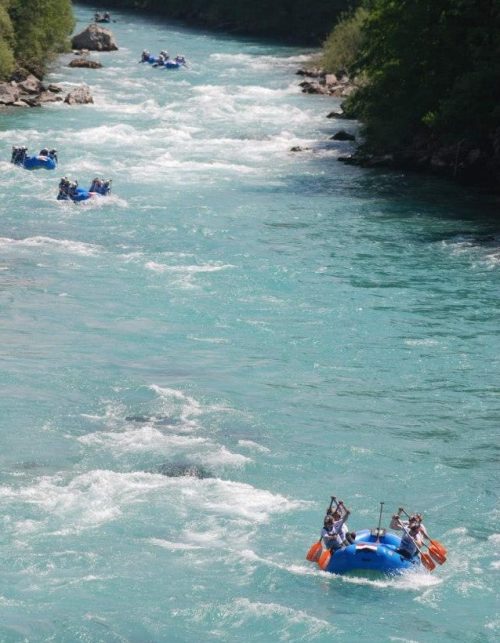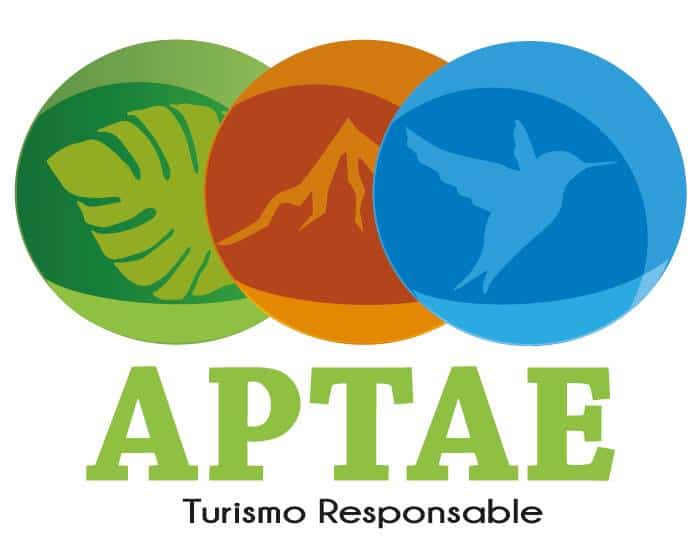by Shannon Farley
 When you hang out with river runners, there are always stories to be told and heard. Talk invariably comes around to the favourite rivers rafted and the rivers still left to be challenged.
When you hang out with river runners, there are always stories to be told and heard. Talk invariably comes around to the favourite rivers rafted and the rivers still left to be challenged.
That’s how it was for Rafael Gallo, Honorary President of the International Rafting Federation and International Whitewater Hall of Fame (IWHOF) honouree, when he spent 10 days in May at the IRF World Rafting Championship on the Tully River in North Queensland, Australia.
Inspired by connecting with rafting athletes and fellow river runners from all corners of the globe and reuniting with international river guides who have at times worked for Gallo’s rafting company Rios Tropicales in Costa Rica, Gallo reminisced on his list of the most exceptional rivers he’s rafted. He wistfully remembered rivers he’d run that have been lost to dams and deforestation; and he eagerly dreamed of the rivers on his wish list still yet to be explored.
From Costa Rica to Siberia, Africa to America, Gallo shares his personal Top 10 List of the Best Rafting Rivers in the World. He remembers the lost rivers he misses and previews the river adventures yet to come.
Rafael Gallo’s top 10 best rafting rivers in the world

Pacuare River, Costa Rica
Not just by Gallo, the Pacuare River is considered one of the best in the world for rafting due to its spectacular whitewater rapids in a long canyon surrounded by breathtakingly beautiful tropical rainforest.
“I am completely biased to put this river as number one,” said Gallo. “It has given me a great life with my rafting company in Costa Rica, the Rios Tropicales ecolodge, and my rainforest conservation project. I had the opportunity to save it from being dammed in the 1990s and protect its original beauty. It has all the qualities for an excellent rafting river: natural flow, a long runnable length with multiple rapids and challenges, good gradient, pure clean water, and all in an exuberant primary forest.”
Tully River, Queensland, Australia
The Tully River is voted the number one whitewater rafting river in Australia, with technical and demanding class 3 and 4 rapids plunging through stunning world heritage rainforest. Everyone who came to the IRF 2019 World Rafting Championship certainly treasured the Tully.
“Just recently at the World Rafting Championship, I was finally able to see the twin river to the Pacuare that I’ve been told about for years. It’s a fantastic river for the beautiful rainforest, the pool-drop rapids, the rock formations, and it’s part of the Tully Gorge National Park, which is a UNESCO World Heritage site.”

Colorado River, Grand Canyon, USA
This famous river tops most lists of the best rafting rivers in the world. The Colorado River through the Grand Canyon is the quintessential whitewater rafting trip with huge rapids, picturesque calm stretches, and some of the best camping ever.
“To me, everyone should see this river. There is no doubt among anyone that this river is one of the top 10 in the world for its majesty and magnificence. I was awestruck the first time I saw this river, and I have had the privilege to run it twice on multi-day trips.”
Zambezi River, Zimbabwe
Called southern Africa’s “River of Life,” the Zambezi is the fourth largest river on the continent; it flows through six countries and supports millions of people. The section below the 360-foot (110 meter) Victoria Falls, in Zimbabwe, provides some of the most exhilarating whitewater rafting in solid class 4 and 5 rapids.
“The Zambezi is like an African monster. It is the biggest and most powerful whitewater that I have ever felt. Each rapid is as strong and as powerful as the next. Huge, short rapids are followed by two-kilometer-long pools that let you try to process what you just went through and gather your wits for the next rapid.”
Futaleufú River, Chile
Dramatically flowing past towering, glaciated peaks of the Andes Mountains in awe-inspiring Patagonia, the Futaleufú River is known for its powerful, exploding whitewater. While the river begins across the border in Argentina, the internationally acclaimed rapids are all on the Chilean side.
“Magical whitewater – the kind of magic that you find in fairytales. It’s a place where you wouldn’t be surprised to see unicorns. The mountains and rocks, the non-stop huge class 3 to 5 rapids, clear clean water flowing through canyon walls … it’s mind-blowing.”
Middle Fork of the Salmon River, Idaho, USA
The Middle Fork of the Salmon River is known as another of North America’s most iconic river rafting experiences. Set in a federally protected wilderness area, the long, 104-mile (167 km) journey is nothing short of spectacular with snowcapped peaks towering over granite canyons thick with forests along the banks.
“The Middle Fork has everything that you would want on an overnight river trip – the scenery, the whitewater, the beaches, the hot springs, and the remote wilderness. With beautiful mountains and great hiking, it’s a classic multi-day river trip.”

Tara River, Montenegro
Called the “Grand Canyon of Europe,” the Tara River cuts the longest canyon in Europe and the second longest and deepest in the world. It is protected as a UNESCO World Heritage Site and is a part of Durmitor National Park.
“The Tara impressed me with its amazing sky-blue color. Being a UNESCO world heritage site, its scenery in the mountains is incredible. And it was the location of the IRF World Rafting Championship in 2009. I have only paddled the lower part and I hope to one day experience the whitewater of the upper river.”
Nolichucky River, Tennessee, USA
The Nolichucky River flows 115 miles from western North Carolina to northeastern Tennessee. The Unaka Mountains provide an incredible backdrop for whitewater rafting class 3-4 rapids through the steepest river gorge east of the Mississippi.
“I am also biased on the Nolichucky River, because it is where I learned how to be a raft guide. It is a beautiful free-flowing river with great character, class 3 and 4 rapids, and easy access even though it is nestled in the mountains and forest.”
Chuya River, Siberia
Thirty years ago, in the Altai Mountains of Siberia, this remote river was where the IRF World Rafting Championship got its start. Based on a partnership formed by Project RAFT (Russians and Americans for Teamwork), founded by California river guides Jib Ellison and Mike Grant and in collaboration with Siberian river explorer Misha Kolchevnikov, the Soviet government hosted over 50 rafting teams from 13 nations to participate in the 1989 Chuya Rally rafting competition. The event is now held annually.
“This may be one of my favourite rivers because of the significance it holds for paddling it in 1989. We formed a Costa Rican team and came to the Chuya Rally with Project RAFT. I remember the water being as cold as it could be. There we were, from all these other countries with our specialised rafting gear, and I was so amazed by the Russians with their homemade gear and rafts and how strong they were. We connected nations and people and brought the rafting world together. We broke political and ideological barriers and bonded as humans running rivers together.”

Po Chu and Mo Chu rivers, Bhutan
Bhutan’s two most prized rivers are the Po Chu (father) and Mo Chu (mother) rivers in the Punakha Valley. Continuously fed by natural glacier lakes in the Himalayas, the rivers flow through serene, lush green alpine valleys, joining together at the dramatic 17th century Punakha Dzong monastery.
“This is the clearest and cleanest water I have ever seen. These two separate rivers flow out of virgin mountains that have never been climbed and join one another; at the confluence there is a majestic Buddhist temple. I was there in 2009 to help assess the development of whitewater rafting in Bhutan. These rivers are very special knowing that few people are able to travel to the Kingdom of Bhutan, and the legends and their religion surrounding the river are fascinating.”
The Rivers We’ve Lost
Everyone in the river-running world has probably lost a favourite river to mining, dams, pollution or deforestation. These are some of the ones Gallo misses most.
Reventazon River, Costa Rica
A series of five dams have been built on the Reventazon and three more are planned. In 2016, the 130 meter-high Reventazon Hydroelectric Dam flooded the Reventazon Valley, creating an eight-kilometer-long artificial lake and destroying the best class 4 and 5 rapids in Costa Rica. Significant environmental damage includes deforestation and dissecting the Barbilla-Destierro Biological Corridor for wildlife.
Bio-Bio River, Chile
In the early 1980s, the Bio-Bio River was a world-famous classic rafting trip, encompassing an adventurous seven-day journey on a pristine river through some of Chile’s wildest natural places. Despite strong activism world-wide against a dam, it was impossible to stop, and the hydroelectric project was completed in 2003. “It is an iconic loss because there was strong international activism, and yet the Chilean government went ahead with the project,” said Gallo.
Coruh River, Turkey
While the Coruh River is still rafted commercially, it has been dammed heavily. “I was very lucky to have run it free flowing in 1993 during the last Project RAFT event,” said Gallo. “It was one of the great rivers because of its remote beauty, small villages along the river corridor, the mountains and the desert.”

The Wish List
- Alsek River in Alaska
- Karnali River in Nepal
- Shotover in New Zealand, South Island
- Navua River, Fiji
Original article can be found here.




